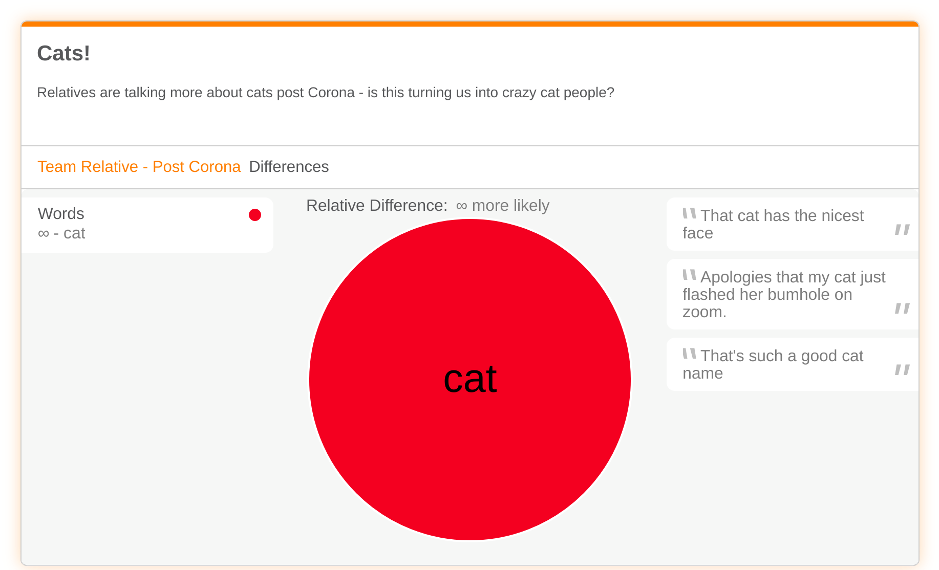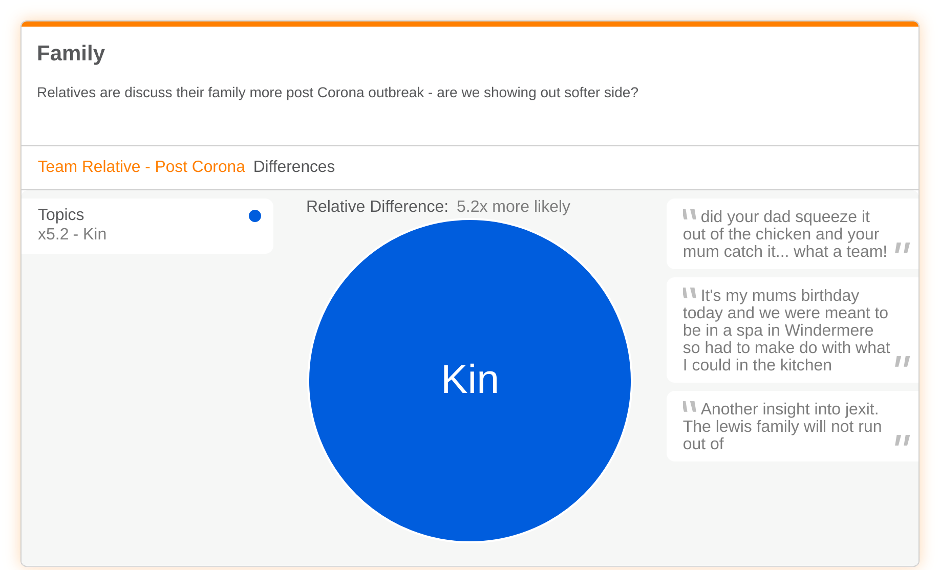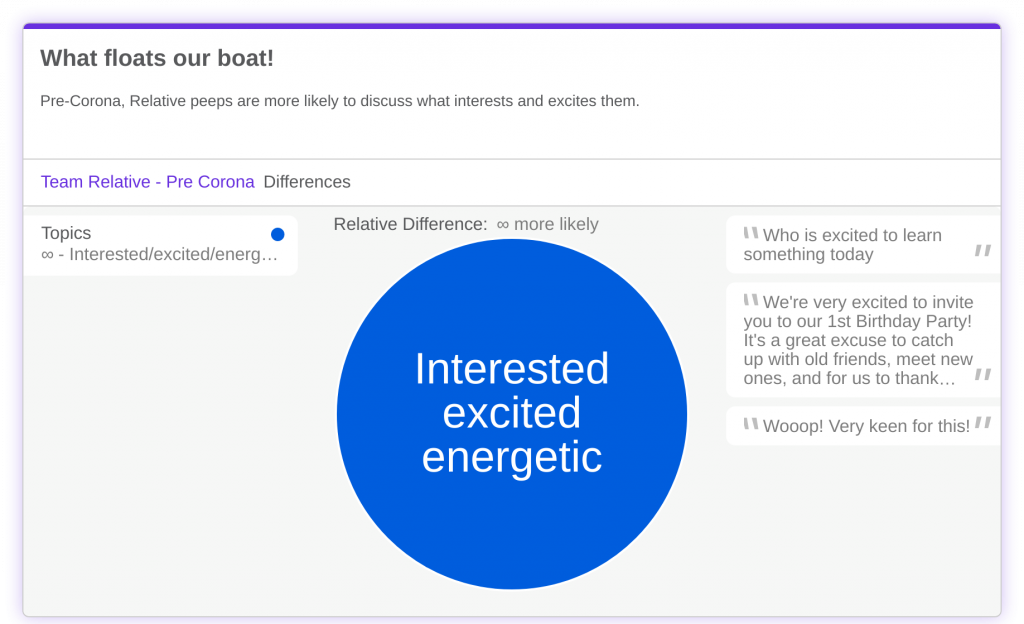Calling HR: Analyzing the impact of Coronavirus on employees

By Alex Kibblewhite
Has employee wellbeing ever been such a hot topic? Not only are we all facing challenges with the physical health of our staff, but more important than ever before – it’s their mental wellbeing that we’re concerned about.
At Relative, we wanted to understand how Coronavirus and the shift to working remotely has impacted our employees. As well as talking to each other regularly via video calls, we also spend a lot of time talking on a chat channel.
To understand more about how we’re all doing, I compared our collective conversation before and after we vacated the office – albeit in a jovial fashion, as everyone could do with a laugh right now.
My comparison was done by analysing conversation from our ‘general’ internal chat channel, as this is a free (non-confidential) space for all types of conversation.
Jokers
Before we were all sent home, Relative Insight employees, who I will affectionately refer to as ‘Relatives’ moving forward (but please don’t be confused, we’re not all related…I certainly hope not!) showcased quite a sarcastic disposition.

Happy to poke fun at each other with a sarcastic tone of voice, we tried not to let the heavy stuff weigh us down.
We also liked sharing our interests and being very vocal about what we liked, not so much about what we didn’t – but maybe that happens in the private conversations…
Excited, it seems

So what’s new?
We are still the same people, doing the same job in a different location – but how much of a difference does that really make? Turns out quite a bit…
First and foremost, we are talking infinitely more about cats, concern arises when you look closer at the quotes on the insights card – ‘Apologies that my cat just flashed her bumhole on Zoom’.
Are we turning into crazy cat people? Who said that? (I have my suspicions…)

Ok, you got me… that was a bit of fun although an insight, nonetheless. What we have seen is how team conversation shifts from a sarcastic tone, talking about what the ‘royal Relative we’ enjoy, and speaking as a collective to using more expressive language, rich with superlatives and emotion.
These days:
As we all work from home, employees are infinitely more likely to use emotional language and talk from a first person perspective – and we are now 1.4x more likely to use pronouns from a first person perspective. Our tone of voice is reflecting the isolation that we find ourselves working in, and the collaborative, group perspective that we spoke with before has changed.
Aside from cats, another key difference that we see is talk about family, with the topic of kin being 5.2x more prevalent now we are all at home.

‘Well, d’uh’ I hear you cry…of course family is top of mind for everyone as we care about our nearest and dearest the most, and with some of us being with our parents and/or children during this period of isolation.
Isn’t it interesting though how we are willing to share our feelings, and connect with our colleagues on a more personal level now that we can’t sit next to them?
Understanding your colleagues
Is it possible that inter-company relationships will be strengthened by the new exposure that we have into each other’s lives… this would certainly suggest so.
Another interesting insight is looking at what hasn’t changed. We have noted differences in tone of voice, perspective and the type of content we discuss, but is there any of our original selves left?!
The answer… of course! We still show a healthy love of food and general contentedness.
Language comparison analysis works on so many levels
What we have done is take a light-hearted sneak peek into what our internal language data can help unearth, the impact of significant events upon our employees and how Relatives are coping with the change in situation.
Insights like these can help companies shape how employee wellbeing strategies, internal comms and get a better understanding of the people who work for them.
We might not be getting an office cat as soon as we’re back in the actual office, but these insights have helped us create staff engagement strategies that speak to where our employees are now, physically and mentally.
